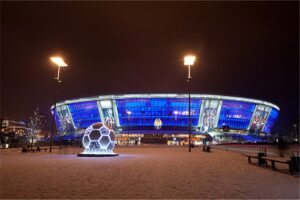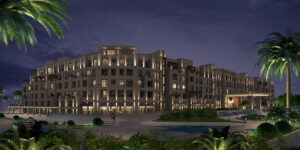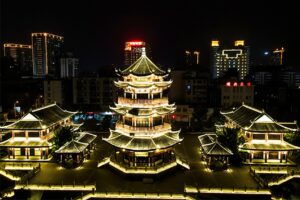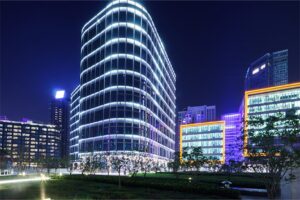In our daily work, we frequently encounter requests from customers asking us to collaborate on providing lighting effect designs, lamp selection, quantity calculations, and other related design tasks. However, we often find that the information provided by customers is very limited, or it requires considerable time and effort to communicate effectively.
This is necessary to gather the basic information needed to commence the design process. During this period, a lot of unnecessary time and energy are wasted, which not only reduces work efficiency but also diminishes the customer service experience.
In response to this, we have compiled and summarized a list of essential information and a brief that customers need to provide before starting the lighting design.
This is aimed at assisting customers who require design consultations and services, enabling us to offer more timely and professional services efficiently. The common information that should be prepared includes the following:

The Photographs of Project Sites
1. For renovation projects or buildings already in use, whether or not the original lighting is to be retained, clients needing a redesign and installation of lighting fixtures to update the lighting effects must provide high-definition photographs of the site.
Both daytime and nighttime photographs are ideal, as they enable designers to better understand the condition of the original building façade. These photographs are essential for considering the design of the lighting effects and for assisting with on-site installation plans and product selection.
The photos should cover at least four facades of the building, and it is advisable to include images from all four corners, resulting in at least eight different angles of the facade. Additionally, if the project is near other illuminated buildings, it’s recommended to include these in the photographs.
This helps designers consider the design’s harmony and unity with the surrounding environment and lighting style, although the final style will ultimately be decided by the client.
2.For new architectural lighting projects, the requirements are similar. However, if some projects are in the design phase before construction is complete, site photos of the building may not be available. In such cases, it’s recommended to provide photos of the surrounding area for reference.
Here, the primary design will need to be based on the building’s interior drawings and architectural renderings. Thus, for projects where building façade renderings can not be provided, on-site photos and video data are extremely important.

Building Facade Rendering
For most formal projects, architectural designers create building facade renderings, which serve as crucial foundational information for lighting design. These renderings are vital for the preliminary lighting effect design.
The most efficient approach is to conduct the secondary design directly on the building facade renderings. This method greatly facilitates efficient communication between customers and designers and effectively conveys the intended lighting effects.
The following is the building elevation rendering of a seaside hotel project of our client:
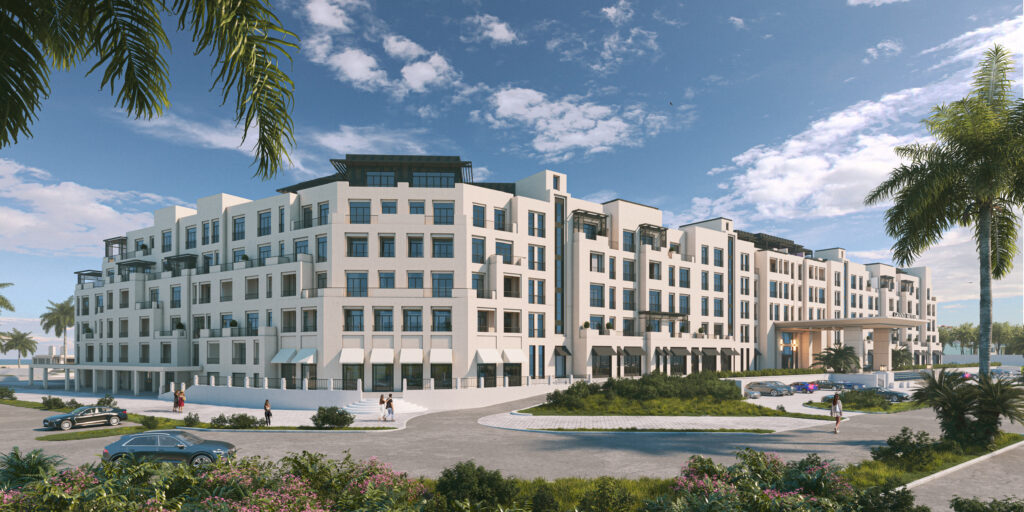

The following is the lighting effect drawing that we designed according to the building elevation and approved by the client.

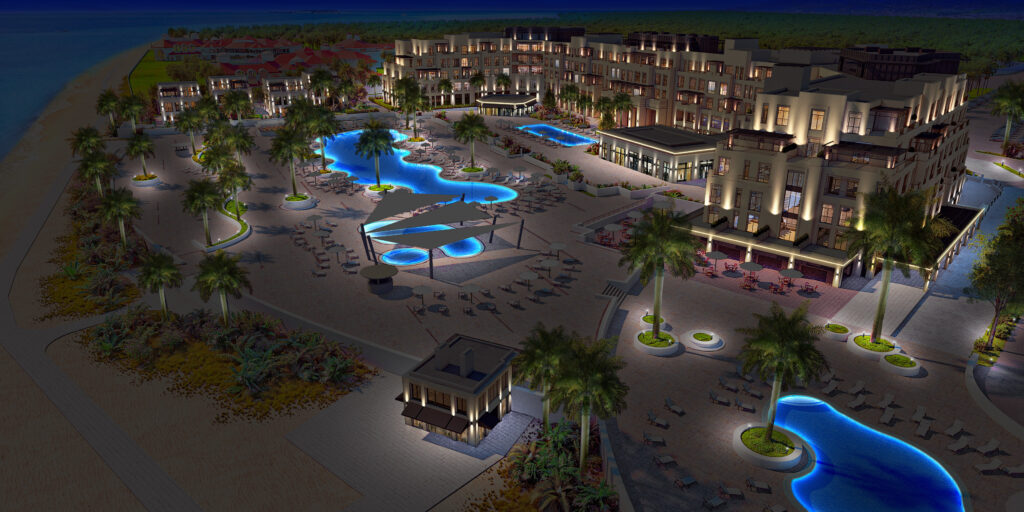
Building Elevations and Plans
Building elevations and plans are fundamental architectural drawings for any building project. They include detailed labeling of building elevations and floor plans, along with samples of node drawings. This is particularly important for drawings of curtain wall elevations.
These nodes and sample drawings are often crucial in the installation of lighting fixtures, as they impact various aspects such as the size, power, lighting angle, installation method, and wiring of the fixtures. Wiring considerations are particularly vital.
These drawings also play a decisive role in accounting for the elements of lighting projects, such as the number of lamps, control systems, and lists of auxiliary materials. If a client needs to estimate the scope of work, then providing these drawings is essential.
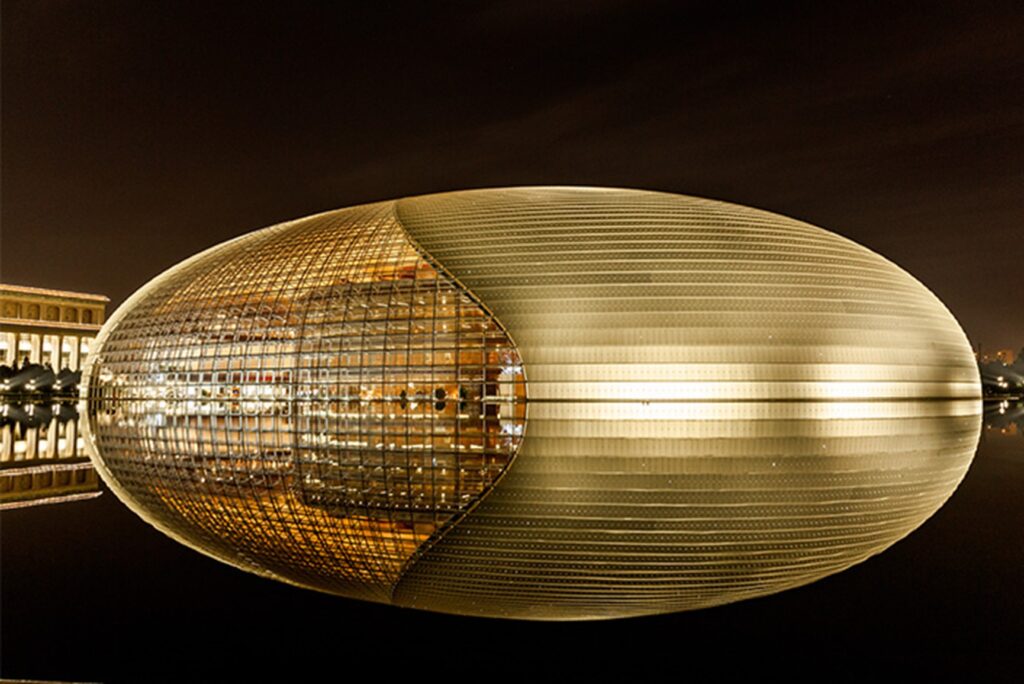
Different Holidays, Different Time Period Lighting Effect Preferences
For various festivals and different times of the night, customers often require distinct lighting effects. It is crucial for clients to communicate these preferences to the designers in advance.
This enables the designers to take these requirements into account during the lighting design process, allowing them to tailor the lighting effects appropriately for each specified time period

Some Objective Constraints at Project Site
Before initiating the design, it is crucial to understand some of the basic characteristics of the project site. For instance, is the project near the sea? This determines whether the design needs to include a robust salt spray protection plan. Is the site prone to typhoons, hurricanes, extreme winds, or other severe weather conditions?
This influences the choice of products and whether structural safety needs to be enhanced. Additionally, the presence of other strong light sources around the site might affect the lighting effect, necessitating a plan to mitigate interference. It’s also important to consider the surrounding residential areas.
The design must ensure that it does not cause significant light pollution issues for nearby residents. These factors require feedback from the clients to help the designer account for these considerations.

Customer’s Style Preference
It’s beneficial for customers to communicate their personal style preferences in advance, to avoid significant deviations in the design direction. For instance, a customer might favor the lighting style of Dubai’s Burj Al Arab and wish for their project to reflect a similar design aesthetic.
Alternatively, they may be inspired by the style of a well-known or lesser-known project. Providing this information and relevant details helps designers tailor their work to meet these specific demands, greatly enhancing the efficiency of design communication.
In our past work, we’ve encountered customers with no specific style preferences, leaving the design choice to our judgment. Conversely, some customers have distinct style preferences, necessitating a design approach centered around their tastes

Conclusion
All in all, it is our aim to provide services to our clients with everything in mind. Strengthening communication with customers, and grasping as much information as possible before starting each design program will enable us to better serve our customers. Any problem or interesting, please feel free to contact us solutionproled.com

